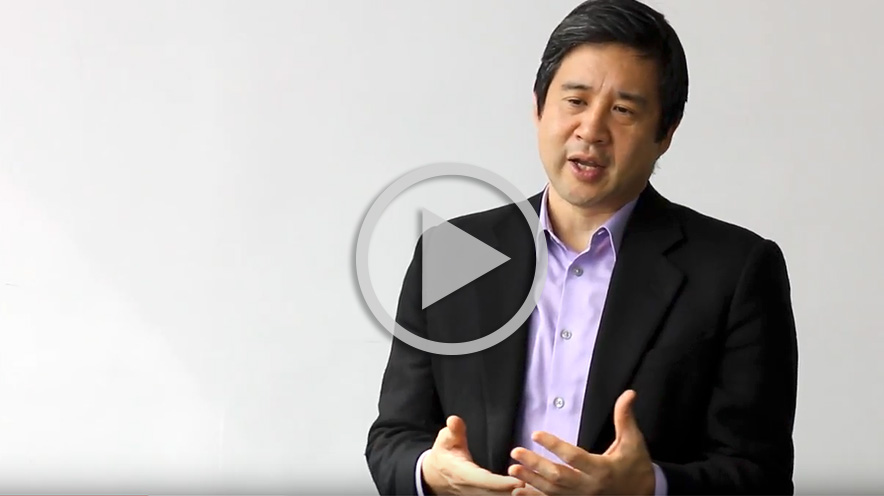Immigrants have been shaping markets for millennia, but have frequently been the target of hostility in many countries. With economic turmoil and a wave of refugees around the world today, questions about the economics and ethics of immigration are again a focus of conversation. Global Network Perspectives asked experts across the Global Network about the roles immigrants play in their regions and whether public perceptions of that role are accurate.

Brazil
GUILHERME STOLLE PAIXÃO E CASARÕES, POLITICAL SCIENCE PROFESSOR, FGV ESCOLA DE ADMINISTRAÇÃO DE EMPRESAS DE SÃO PAULO
![]()
Brazil is a country whose economic structures and national character have been largely shaped by immigration. Between 1870 and 1950, waves of Italians, Germans, Arabs, Japanese, Jews, and Koreans reached Brazil’s shores and helped form not only the country’s social fabric but also a very dynamic industrialized economy.
Over the second half of the 20th century, migration patterns changed considerably. Brazil’s long periods of recession made it a net exporter of migrants. It was only in the late 1990s that flows into Brazil were restored—now from neighboring Paraguay, Argentina, and Bolivia, as well as from China and Africa. Part of this movement can be explained by regional integration, which allows for free flows of labor, and part is due to shifting global patterns of immigration.
Migrant flows intensified even further with the global financial crisis of 2008. For some years, Brazil’s economic resilience kept attracting immigrants. Most of them are unskilled workers from Bolivia and Haiti who end up in the informal job market in large cities, under precarious conditions. The number of skilled workers from Portugal, China, and the US has increased, but they face bureaucratic hurdles typical of backward migration policy.
Current figures on immigration are nonetheless unimpressive. According to the 2010 census, there are 268,000 migrants in a population of more than 200 million. Even when taking illegal immigrants into account, there are no more than 1.5 million foreigners living in Brazil. While bureaucracy and recession are real obstacles, geography and language are also relevant barriers to greater flows.
Businesses have yet to fully comprehend—and benefit from—the potential of immigrants in the Brazilian economy. This seems to be a cultural issue, since local companies are still rather parochial and inward-looking, perhaps as a consequence of years of economic isolation. As Brazil’s population grows older, however, there will be an increasing need for a young and diversified workforce. If Brazil keeps opening up at a slow rate for foreign workers, it will most certainly lag behind more dynamic emerging economies in the future.
France
TOMASZ MICHALSKI, ASSOCIATE PROFESSOR OF ECONOMICS, HEC PARIS

In recent years, legal, temporary immigration from new EU entrants has been a way for Western European countries to save costs in important sectors without actually reforming their policies. In many sectors, such as construction and transportation—which together employ up to 15% of the workforce, and are key for any modern economy—“posted” workers and EU-wide competition have been allowed. “Posted” workers can provide temporarily services in other countries in the EU, but operate under contracts in their home country.
Similarly, transportation companies from Eastern Europe effectively obtained rights to serve all EU markets. In both cases, the gains for employers were twofold: they economized on direct wages overall, but especially on social security charges. Moreover, it is legal for “posted” workers to alternate work between EU countries—for example, Belgium and France—without going back home.
Of course, many have also abused the measure.
The entire arrangement is in the spirit of the single European market, which calls for the free movement of people, goods, and services. But, because of persisting income inequalities—related to the Harrod-Balassa-Samuelson effect—among EU countries, these measures have had some unpleasant consequences. Productivity in trucking and construction is, controlling for capital use, similar across the EU. The low-cost workers from Eastern European markets wiped out the transport companies in Western Europe (especially long-haul) and made for a massive entry in the construction sector.
This has hurt the low-skilled workers previously employed in that sector—and their wages could not fall, given mandated minimum-wage floors. This resulted in unemployment and fuelled anti-EU, anti-immigrant sentiment that profited populist political parties. Western governments responded by either calling to end “social security dumping” or reforming minimum wage and social security systems in the entire EU. This issue is pending, and may further undermine the EU construct.
Hong Kong
ALBERT PARK, PROFESSOR OF ECONOMICS IN THE SCHOOL OF BUSINESS AND MANAGEMENT AT HKUST AND DIRECTOR OF THE HKUST INSTITUTE FOR EMERGING MARKET STUDIES


Watch on YouTube
In this video, Professor Albert Park shares insight into the real effect of immigration on East Asian economies. Immigration has become a point of contention in the West, and the East is no different. However, public perceptions often overlook the solid benefits for economic growth. Immigration will become even more important as Asian economies start facing population decline. What are the benefits of immigration for East Asian economies? Is automation a replacement for immigrant workers? And most important, what can policy makers do to promote greater labor mobility in the region?
Mexico
Sonia Monárrez, National Coordinator of Concentration Areas, MBA, EGADE Business School, Tecnológico de Monterrey

The economic contribution of Latin American immigrants in the United States is indisputable, and will continue to grow in the coming years. The Latin American market is the fastest-growing in the US economy; as consumers, as entrepreneurs, and as part of the labor force, the Latino community should not be overlooked. On the contrary, strategies should be directed to this group to take advantage of its growing potential.
By 2060, Latinos are expected to make up 30% of the total population of the US. One in three consumers and one in three workers will be of Latino origin, making it a sizable market. It is estimated that about 1 million Latin Americans in the United States turn 18 every year. They currently represent a consumer market of more than $1.7 trillion. Latinos are also at the forefront of entrepreneurial activity; as reported in “State of Latino Entrepreneurship 2016,” a report from the Stanford Latino Entrepreneurship Initiative, “[T]he five-year average growth rate in the number of Latino firms has remained at double or triple that of the national average for the past fifteen years.”
The effects will be felt not only in the US market, but also in the countries that receive remittances. Workers send money to their families in the region, and remittances have a strong impact on the domestic economy, increasing the purchasing power of poor households in the region. In 2015, workers sent $43.6 billion from the US to Latin American countries, representing 71% of the total flows from that country. Most of the resources in Latin America are received by Mexico (55.8%), followed by Guatemala (13.7%) and El Salvador (9.1%), according to the World Bank.
These figures indicate that Latin American immigrants will have the greatest impact on economic development in the US in the coming years. Therefore, business, marketing, and even political strategies should consider this important and growing market.
South Africa
NCEKU NYATHI, SENIOR LECTURER, UCT GRADUATE SCHOOL OF BUSINESS

Given that South Africa and, more broadly, sub-Saharan Africa (SSA), is one of Africa’s leading economies, it should not come as a surprise that immigration is a big issue here.
According to UNHCR, SSA hosts 26% of the world’s refugee population. While the spotlight in recent years has been on how the Syrian refugee crisis affects Europe, the vast majority of African refugees flee within the continent. South Africa takes in the most by far. Between 2006 and 2012, South Africa received the highest number of asylum seekers of any country in the world, peaking in 2009 with 222,300 claims. And the country has been something of a leader in the region with regard to its treatment of refugees, allowing them to move freely and work in the country while their cases are being reviewed. But this moral leadership in this area is coming under threat.
Following a spate of violent attacks on foreigners starting in 2008, many perceive that the populist rule of Jacob Zuma is overseeing an unravelling in refugee rights. In its 2017 global report, Human Rights Watch specifically criticized the Zuma government for failing to protect the right to education, combat violence against women, or crack down on anti-immigrant violence, among other complaints.
The problem is exacerbated by a lack of clear leadership—with many leaders seeming to condone or encourage xenophobia—combined with persistent poverty, inequality, high crime and unemployment (now at 30%) in the country. This fuels dissatisfaction among millions of South Africans, who feel that not much has changed for them since 1994. And it is boiling over into misplaced anger against immigrants. In a recent statement, Amnesty International said that it believes that the latest spiralling xenophobic tension is being fuelled, in part, by longstanding police and criminal justice failures, including a failure to address toxic populist rhetoric that blames refugees and migrants for crime, unemployment, and other social problems.
Public perception that fuelled the recent march against foreigners in Pretoria, the country’s administrative capital, appears to center around the fact that immigrants “bring nothing but destruction; hijack our buildings, sell drugs; inject young South African ladies with drugs and sell them as prostitutes,” according to a quoted source in the Daily Maverick news site. Yet there is no hard evidence for this, and the facts point to the opposite.
The economic impact of refugees is a poorly understood phenomenon worldwide, but a 2015 study by South African watchdog and news agency Ground Up summarizes it as follows: “Migrants are making a significant contribution by servicing the needs of poorer consumers who can access cheap goods often in appropriate quantities, at places and times of day that are convenient or have their niche demands met. Immigrants also introduce new products, business activities and opportunities, and bring scarce skills like manufacturing particularly into the township economy.”
As the study shows, immigrants are also paying rent largely to South Africans. Of 500 migrants interviewed in Cape Town, 56% were paying rent to either South Africans or the City Council; 43% of Johannesburg interviewees were doing the same. Migrant businesses also support South African business. Cross-border immigrants are largely using South African–owned taxis and buses, and staying in accommodations run by South Africans. Goods are sourced from the formal economy—wholesalers, supermarkets, and South African factories.
The rising violence against immigrants therefore holds little benefit for the region. The fact that more than 20 businesses were looted during a single flare-up of xenophobic violence in Johannesburg toward the end of February shows that the impact on business in the country is costly—aside from the many human costs. Violence is expensive. The 2016 Global Peace Index estimates that violence costs the global economy a staggering 13.4% of GDP each year.
There is also a risk that South African businesses operating in the rest of Africa, many of them extremely successfully, will be targeted in retaliation for the country’s perceived inhospitability to African migrants. Following outbreaks of xenophobic violence in 2015, for instance, several African countries called for boycotts on South African goods and products, with the Nigerian parliament going as far as calling to sever diplomatic ties with the country.
This kind of division and animosity spells disaster for a continent that desperately needs to increase inter-regional trade. Africa must transition from its reliance on commodities and natural resources—which leaves it vulnerable to the whims of pricing cycles—and instead diversify and specialize. This is a philosophy known as Africapitalism, an economic philosophy that seeks to harness private sector entrepreneurship and investment to create social wealth and address structural problems at the local level.
So there is a lot at stake here, and not just for business. Aside from the need for South Africa to uphold its image as a champion of human rights, there is a strong need for Africa as a whole to do what many of its leaders claim they want to do— create African solutions to African challenges. If African refugees cannot find refuge in other African countries, then the continent is truly failing its people. And the dream of the African Renaissance is turning to ash in our mouths.
Switzerland
JEAN-PIERRE LEHMANN, PROFESSOR OF INTERNATIONAL POLITICAL ECONOMY AT IMD


Watch on YouTube
In this video, Professor Jean-Pierre Lehmann makes a case for the link between Switzerland’s success in international business and its status as an open country.
ARTURO BRIS, FINANCE PROFESSOR AT IMD AND DIRECTOR OF THE IMD WORLD COMPETITIVENESS CENTERS

Competitiveness greatly depends on the extent to which governments facilitate an environment conducive to business. One key indicator in this dimension is the impact of immigration laws—that is, whether or not those laws curtail the ability of enterprises to conduct their activities effectively. We partly captured the effect of stricter immigration policies through a recent World Competitiveness Center executive opinion survey, designed for the IMD World Competitiveness Yearbook.
We at the IMD World Competitiveness Center observe that some of the countries perceived by executives to have adopted stricter regulation in terms of immigration are simultaneously perceived as experiencing a shortage in specific skills and competencies. For example, data shows that in the 2014–15 period, Germany, Malaysia, and Switzerland strengthened their immigration policies. At the same time, executives indicate that these countries experienced a decline in the availability of senior managers with significant international experience and in the availability of skilled labor in general. The business environment in Germany and Malaysia was presumed to lose some attractiveness for foreign high-skilled people, while Switzerland remained attractive.
Conversely, executives indicated that in the same period, Qatar had “relaxed” its immigration policies. They point out that the country experienced improvements in the availability of skills and competencies, and at the same time, its attractiveness increased. In the case of Mexico, the pattern differs. Despite stricter immigration policies there, executives indicated that the country experienced improvements in the availability of skills and competencies. and the country remained attractive to foreign highly skilled people.
It is also important to note that data related to productivity exhibits similar results. Executives considered that in Germany, Malaysia, and Switzerland, the workforce productivity (by international standards) declined during 2014–15. Likewise, in regard to the efficiency (by international standards) of large corporations and of small and medium-size enterprises, executives indicated that these factors also dwindled. In Qatar and Mexico, on the other hand, the productivity indicators improved.
Of course, there could be a myriad of other factors affecting the above data trends. It is thus essential to further explore the interactions among immigration, talent management, and productivity.
STEFAN MICHEL, PROFESSOR OF MARKETING AND SERVICE MANAGEMENT AT IMD AND DIRECTOR OF IMD'S EMBA PROGRAM

Imagine that your grandparents, your parents, and you had lived the majority of your lives in your home country, but none of you were full citizens.
Until this year, that was still possible in Switzerland. The country’s federal government finally rectified the situation through a vote on February 12 to grant eased conditions for citizenship to third-generation “foreigners.” Previously, the rules for granting citizenship were set in the country’s individual cantons, but the nationwide referendum [C1] makes the process both easier and uniform across the country.
Two aspects of the vote were quite striking to me.
First, the right-wing Swiss People’s Party, which holds two of the seven top ministerial positions in the country, was strongly against this new law. The party’s advertising campaign firmly played the race card, and huge posters of a woman wearing a burka could be seen around the country. Surfing the wave of fear of Islamic terrorism, the party knows that it cannot win votes from the center, so they’re counting on keeping the xenophobic voters on their side in preparation for their next campaign against foreigners, the EU, and everything else “non-Swiss.”
Considering what’s happening in Washington, this is quite worrying. Democracy can only work long-term if voters are well informed. About 25,000 people who are third-generation foreigners can now benefit from simplified naturalization, and only 300 of them—300!—come from non-European countries. I would imagine not one of them wears a burka. This type of propaganda is not acceptable from a party that counts ministers who are in charge of Switzerland’s military and finance departments.
The second point that is very important to me personally is that this vote is more than just a change in the constitution. I was raised in my parents’ restaurant, and I have fond memories of when we were kids. We often celebrated Christmas with guest workers, mostly from Southern Europe, who were working in our kitchen and did not have enough money to travel home and spend the holidays with their family.
The economic miracle of Switzerland would not have happened if it was not for immigrants at every level of the society, from domestic workers to doctors.
The recent vote to relax the immigration laws was an important symbol of gratitude to the grandchildren of those who came to our country for work and found a new life, and contributed to the betterment of the country along the way.
United States
Ahmed Mushfiq Mobarak, professor of Economics, yale School of Management

The research on the economic impact of immigration is quite clear, but I think there are lots of public misperceptions about the effects on the U.S. economy. When people think about what an immigrant does, the first thing they think about is, “Here’s an immigrant that comes, takes a job, and that’s a job that an American could have otherwise received.” But the actual story is not that simple.
It’s often the case that immigrants take jobs that Americans don’t want, and it’s also often the case that Americans have a set of unique skills—language skills or customer- or client-facing skills—that immigrants cannot easily reproduce. So, what you end up seeing is immigrants sort into jobs that Americans otherwise would not be taking.
The story can get even better than that. In addition to immigrants not being substitutes for American workers, they may even be complements for those workers. One example would be an immigrant who is willing to take a low-paying job, say, at the back of a restaurant washing dishes. That makes the restaurant business more sustainable and viable, and it allows the restaurant owner to hire more American workers to be client-facing, say, as maître d’ or waiters or managers.
It could also be the case that, if immigrants are coming in and taking low-paying fruit-picking work, as they often do in the U.S., that makes a vegetable business or a fruit business more viable, and that creates jobs for Americans downstream.
It’s also the case that a lot of immigrants come in and provide some basic home services and lower those costs. Research shows that in cities that have a higher fraction of immigrant workers, the cost of lawn mowing, babysitting, and other such services are lower. That frees up time for American workers and allows them to take advantage of their college education and go earn a salary outside the home. So, it becomes a win-win both for the worker who is American as well as the worker who is an immigrant.
Excerpted from the article “Does Immigration Create Jobs?” in Yale Insights. Read the full interview with Ahmed Mushfiq Mobarak, and watch his animated video, “The Economic Benefits of Immigration.”

